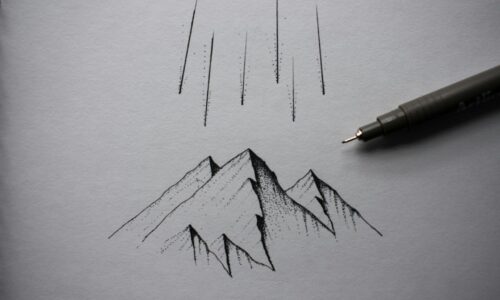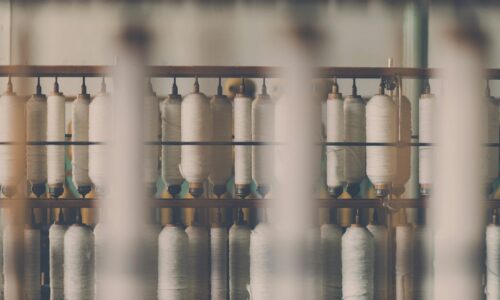Art used to be a hands-on, messy, and downright magical affair. Back in the day, artists didn’t just buy their supplies from a big-box store; they made them. Think Renaissance masters grinding pigments by hand, medieval scribes concocting ink recipes like mad scientists, and sculptors using techniques that would make modern power tools weep in inferiority.
Yet, somewhere between the rise of mass production and our obsession with digital everything, we lost a treasure trove of artistic techniques. So what happens when we revive these forgotten artistic methods? Magic. Pure, chaotic, sometimes-toxic (we see you, lead-based paint) magic.
Why Did These Techniques Vanish? (A Tragic Tale of Convenience)
Once upon a time, making art was as much about science as it was about skill. Then came industrialization, and suddenly, paint came in neat little tubes, canvases were pre-stretched, and carving marble became an option only if you had a forklift and a lot of patience.
The result? Many traditional techniques got ghosted. Some disappeared because they were time-consuming (gold leafing isn’t exactly a five-minute job), others because they involved materials that might kill you (hello, mercury-based vermilion). And let’s be honest — who’s got time to hand-mix egg tempera when acrylics dry in minutes?
But now, a new wave of artists, historians, and downright nerdy preservationists are determined to resurrect these lost methods. And spoiler alert: they’re ridiculously cool.
Techniques We’re Rescuing from the Art Graveyard
1. Egg Tempera: The Original Anti-Aging Paint
Before acrylics and oil paints took over, artists used egg yolk to make their masterpieces last longer than a vampire’s lifespan. Egg tempera — the paint of choice for icons, medieval portraits, and early Renaissance works — was fast-drying, durable, and had a luminosity that modern paints struggle to mimic.
But because it requires you to play chef (cracking eggs in the studio, anyone?), it lost popularity. Luckily, contemporary artists like Natural Pigments are bringing it back, offering DIY kits for those ready to channel their inner Michelangelo (minus the Sistine Chapel-level pressure).
2. Gold Leafing: The Ultimate Flex
Nothing screams “I’m fancy” like gold leafing. Used for centuries in illuminated manuscripts, religious art, and luxurious decor, this technique involves applying whisper-thin sheets of real gold onto surfaces using delicate, time-consuming precision.
Why did it disappear? Because gold isn’t cheap, and the process requires monk-like patience. But if you want to bring back the bling, companies like Sepp Leaf sell everything you need to turn your DIY projects into a Midas-level masterpiece.
3. Fresco Painting: Because Walls Should be Art, Not Just White
If you’ve ever been awestruck by the Sistine Chapel, you’ve seen fresco painting in action. This technique involves painting on wet plaster so that the pigments bond with the wall itself. The result? Colors that stay vibrant forever (or at least for a few centuries).
The catch? You have to work fast — before the plaster dries. This might explain why the technique got ditched in favor of, well, wall paint from Home Depot. But if you’re feeling ambitious, places like Fresco School offer workshops to help you master this lost art before your walls settle for mediocrity.
4. Cyanotype: The Original Instagram Filter
Want to make art using the power of the sun? Enter cyanotype, an early photographic printing process that results in dreamy, blue-toned images. Once a go-to for architects’ blueprints and early photographers, it faded into obscurity when modern printing took over.
But now, cyanotype is making a comeback, thanks to artists looking for alternative photography techniques. If you want to experiment with it, check out **Jacquard Products ** for starter kits that let you harness sunlight like an alchemist.
How You Can Get in on the Revival
Bringing these forgotten artistic techniques back from the dead isn’t just for history buffs — it’s for anyone looking to add a little soul (and occasional chaos) to their work. Here’s how you can start:
- Partner with Art Schools & Museums: Institutions like the Metropolitan Museum of Art and Getty Conservation Institute run workshops on traditional methods. It’s like Hogwarts for art nerds.
- Support Brands That Keep Traditions Alive: Whether it’s Kremer Pigments for hand-ground colors or Sepp Leaf for gilding supplies, these brands are keeping ancient art techniques accessible.
- Experiment Like a Renaissance Rebel: Try making your own inks, mixing pigments, or learning an old-school technique like encaustic painting (hint: it involves molten wax and possibly a fire extinguisher).
The Future of the Past
Reviving lost artistic techniques isn’t just about nostalgia — it’s about expanding what’s possible in modern art. Plus, let’s be real: telling people you make paint from scratch or apply real gold to your artwork makes you sound way cooler than “I use store-bought acrylics.”
So, whether you’re a professional artist, a curious creative, or just someone who thinks squid ink should be for writing, not pasta, it’s time to dig into the past and bring some ancient magic back to the modern world.
lost artistic techniques, forgotten artistic methods, traditional art methods, revive ancient art, historic art techniques, egg tempera, fresco painting, gold leafing, cyanotype printing, traditional painting techniques, restoring old art techniques, art restoration methods, museum conservation techniques, art history techniques, ancient art methods




